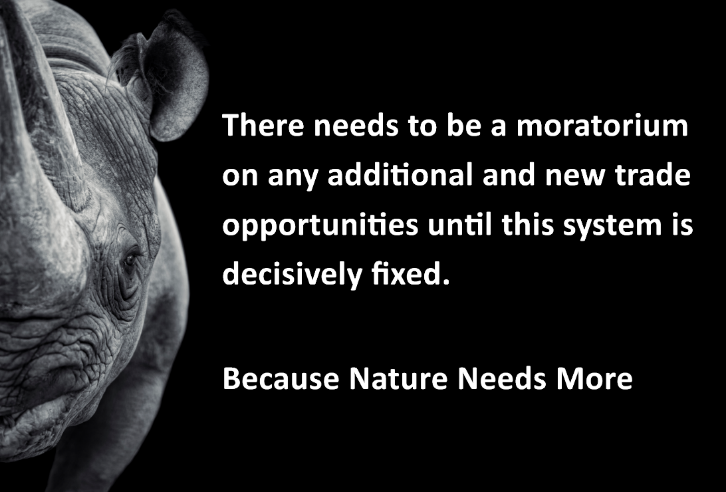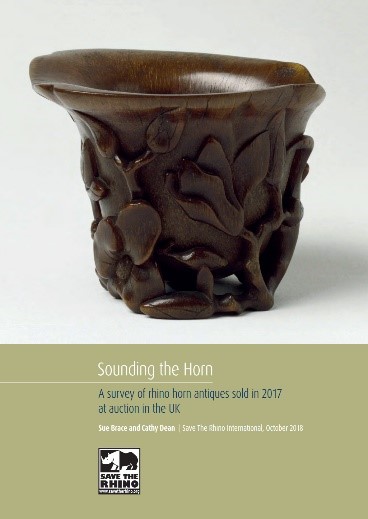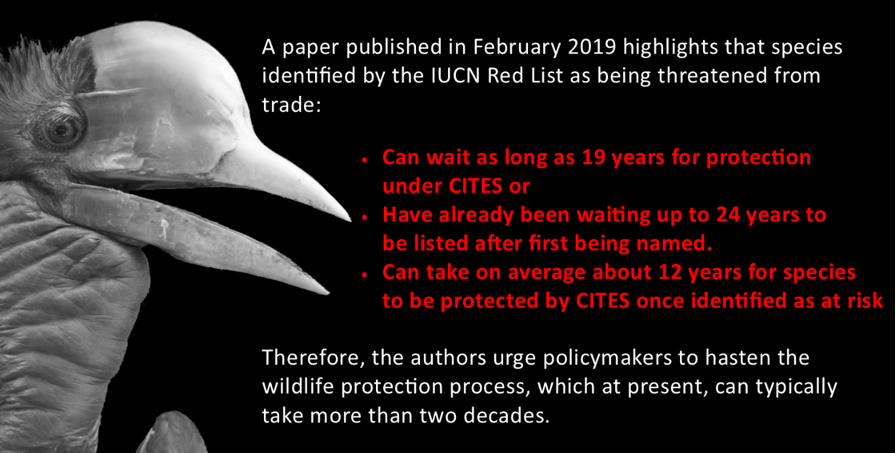
In 2014 I realised I was incredibly naïve, which came as a shock. After all I have spent 20 years coaching executives from some the most hated sectors including banking, petrochemical and government. I thought I had seen all aspects of both stupid and ruthless behaviour, but I was wrong.
The source of my naivety was realising that while everyone wanted to stop rhino poaching, not everyone wanted to collapse the demand for rhino horn; these are two very different things. In addition, there are some people who have demonstrated that if the price of stopping the poaching is to fully collapse the desire for rhino horn, then they prefer to live with some (significant) level of rhino poaching activity. Even the South African government released a summary report saying that a legal international trade in rhino horn and demand reduction campaigns are not mutually exclusive, which is frankly rubbish. We have now had years of governments and individuals keeping the pro-trade strategy on the agenda; and rhinos have continued to suffer and die as a result.
In South Africa for instance, the committee established to examine a potential trade in rhino horn invited no one from demand side countries (or industries that know the [SE] Asian consumer) to participate; it was done from supply side factors alone. Similarly, the so-called Smart Trade model developed by the pro-trade lobby uses supply-side economics and doesn’t interrogate the motivations of the current buyers or the demand-side marketplace. Indeed, their representatives have made very clear statements in pro-trade videos that they don’t care about the nature of the current demand; one of their go-to economists, Michael ‘t Sas-Rolfe, states “Rhino horn and these other products are status goods; they are prestige goods. What they are used for is hardly relevant. The fact is that people are willing to pay extremely, extraordinarily high prices for them”. [As a quick aside, I can’t quite get my head around the fact that the guy who stated the use for rhino horn being hardly relevant is part of the Oxford Martin Programme on the Illegal Wildlife Trade created to tackle the illegal trade – but that’s another story].
My naivety was also a result of realising that some people are ok to put a species’ survival in the wild second to making money from trade in its body parts. This got me thinking, why this approach hasn’t been challenged. What happens in the LEGAL trade in species that enables this to happen? For the answer I looked to CITES (Convention on International Trade in Endangered Species of Wild Fauna and Flora). CITES came into force in 1975 based on the view that the regulated trade in species will help the survival of the wild cohort – the ‘if it pays it stays’ model.
Under the CITES model the trade in flora and fauna has exploded, the value of the legal trade was estimated, in 2012 UK Parliamentary Report, to be US$320billion annually. Similarly, a 2016 European Parliament Report states “The wildlife trade is one of the most lucrative trades in the world. The LEGAL trade into the EU alone is worth EUR 100 billion [US$112 billion] annually”. The number of species listed for CITES trade regulation is 36,000. Staggering number and amounts.
What is even more staggering is that core funding for CITES to manage this lucrative legal trade is US$6 million annually and the businesses benefiting from this trade (some of the wealthiest and biggest brands in the world) pay only token amounts for CITES permits and try to validate their supply chain traceability via statements that they are ‘complying with the CITES rules’. Yet this very permit system is hopelessly out of date, paper based and easily subverted by the illegal trade.
All of this means that flaws in the legal trade system are enabling the illegal trade to thrive. The 2017 World Customs Organisation Illicit Trade Report states the estimated profit from the illegal trade in flora and fauna to be as much as US$258 billion annually, which according to the United Nations Environment Programme is growing at 2-3 times the pace of the global economy.
Since this all started with rhinos, let’s look at a few examples for rhino horn and the antiques trade:
- In October 2018, Save The Rhino published their Sounding the Horn Report, summarising their survey of rhino horn antiques sold in 2017 at auction in the UK. Of the 300 items of rhino horn surveyed, including many libation cups, they stated “there is no guarantee all items offered for sale were pre-1947; to our knowledge no radiocarbon-14 dating (the only method to accurately detect horn age) was carried out. In cases where age estimates were provided, they were given as very broad ranges. 89% of all items were listed without any detailed provenance (history) and 25% with no age estimate at all.”
- The lack of regulation of the antique trade provides an opportunity to launder rhino horn obtained via poaching. In an August 2014 article by Julian Rademeyerhe details the case of Li Zhifei. Li Zhifei arrested in Florida in 2013, who pleaded guilty to 11 counts of smuggling. According to his business card Li owned an antique business, in China’s Shandong province, called “Overseas Treasure Finding”. Li was more than happy to dupe his wealthy clients. The article states that Li took nearly 25 horns from poached rhinos to secret workshops. According to Li, the horns were then fashioned into copies of exquisitely carved antiques. Commonly referred to in China aszuo jiu – literally “made old” – the fakes would be shopped to the greedy and the gullible.
- In 2017, a request to the Australian parliamentary library showed that the between 2010-2016 there were a total of 25 seizures of specimens that were suspected to contain rhinoceros (rhino horn). Although Australian laws enable jail sentences up to 10 years or fines of up to $180,000, the first step in mounting a prosecution, namely carbon dating, had not been done. Therefore, no one has been prosecuted for any of these 25 seizures.
Only the 183 signatories (182 national governments and the EU) can propose the necessary changes to fix the flaws in the current legal system and strike decisively against the illegal trade. And CITES is a flawed system that wouldn’t pass a basic audit process let alone a forensic one.
Given all this, would you be shocked to know that in the 44 years that it has been in existence CITES has had only one review and that was in 1994? How many organisations would survive if they hadn’t had review of their effectiveness for 25 years? Why have 183 signatories and the conservation sector been complicit in this?
Conservation organisations and academics have highlighted the flaws in the CITES system for years but they have never pushed for a review. Why? I could answer this, but that would take another article. Suffice to say they haven’t.
For example, a paper published in February 2019 demonstrates that species identified by the IUCN Red List as being threatened from extinction have been waiting up to 24 years for protection under CITES.
Or, a paper published in 2015 outlined the prevalence of documentation discrepancies in CITES trade data for Appendix I and II species exported out of 50 African nations (and 198 importing countries) between the years 2003 and 2012; the data represented 2,750 species. Of the 90,204 original records downloaded from the database:
- Only 7.3% were free from discrepancies
- Increases in discrepancy-rates between 2003 and 2012 suggests that the trade was monitored less efficiently in 2012 than it was in 2003
But there is a solution, which was first proposed by the Australian Fraser Government in 1981 (at CoP3, when only 700 species were listed for trade restrictions), a reverse listing approach. The submission by the Australian government correctly states the problems arising as the list of species for trade monitoring grows:

And recommends:

At the time it wasn’t adopted because, at 700, there were considered too few species listed; it is now 36,000. So the CITES system was left to expand and to grow unrestrained, to the point were there are too many species, not enough control and too few resources. Everything the 1981 Australian submission warned would happen has happened and signatories, corporate conservation and the CITES Secretariat have stood by watching, but didn’t act.

Given all this, why would we conform to the suggestion that instead of pushing for a comprehensive review, which incorporates looking at a reverse listing and levy approach, we work within the current flawed system and take “small steps” as suggested by one country’s CITES authority. To try to persuade us of the current approach they gave the example of the something they were working on, eels, which they anticipate will take about 10 years to get the listing they want!!!! They didn’t like the response which was that their eel example shows perfectly why the CITES system needs an overhaul, as we said “CITES is a trade convention, trade is measured on quarter-by-quarter basis, while they are talking about getting eels the necessary listing in about 10 years time!”.
The system is f@%*ed, sorry critically flawed.
But there is a review on the CITES CoP18 agenda, submitted by DRC, Namibia and Zimbabwe. This review, only the second in 44 years, is narrow and more focused on liberalising trade. Given this review is on the agenda, we are calling on CITES signatories to request a comprehensive review. It is long overdue.
But they are worried that in picking at this scab it will be revealed how much the system has let our wildlife and the natural world down. In the same time CITES has been in place humanity has wiped out 60% of mammals, birds, fish and reptiles. It seems like the sustainable-use mantra “If it pays it stays” is over valued (and over generalized) as it doesn’t always work.
So, no more naïve – there is no way to tackle the illegal trade in rhino horn or anything else without fixing and adequately resourcing the legal trade system. While traffickers can subvert the legal trade system at will and pro-traders can continue to advocate for a legal trade without the burden of proof that it will be ecologically sustainable and reduce poaching, any gains from demand reduction campaigns might be short lived. Changing CITES to the reverse listing process puts the burden of proof on pro-trade and put the costs of providing that proof onto those who stand to benefit; and all the work needs to be done up front before a submission can be made asking for a legal, international trade.
If this type of system had been in place, all the years, all the energy and all the resources that have been diverted to the pro-trade/no-trade debate would not have occurred; and rhino poaching might have again become a thing of the past.
Come on CITES signatories and corporate conservation, get a backbone. Signatories, stop worrying about parties withdrawing from the convention and, also, challenge businesses to resource the system they benefit from. Conservation and academia, face up to your conflicts-of-interests and challenge your sustainable use donors when there is no basis for trade.
There are a growing number of people picking at the scab of the flawed legal trade in flora and fauna. While it has not quite reached the activity for climate change, driven by Greta Thunberg, Extinction Rebellion and School’s Strike for Climate, the challenge to the legal trade and the CITES system that supports it is not likely to go away. It’s time for CITES Signatories to put wildlife and the natural world first, it is long overdue.



